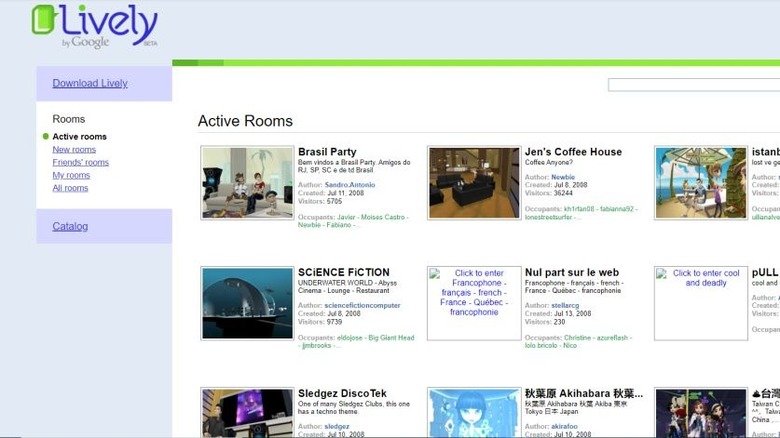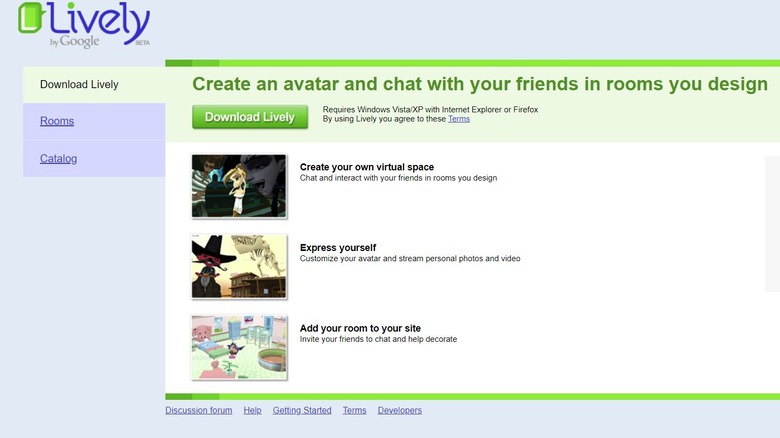Google's Failed Second Life Clone That Died In Less Than A Year
Long before the metaverse, there were online 3D chatrooms pulling traffic in the millions. Just look at the online game Second Life, which today boasts 64.7 million players, or IMVU with its 7 million users to date. In 2008, when these online worlds were in their heyday, Google decided it wanted to take a stab at something similar. The company designed a concept that allowed users to create their own avatars and rooms in which people could chat. This was extremely similar to Second Life, but there were some differences that made Google's creation, called Lively, unique in its own right.
Despite those differences, Lively's audience was decidedly small, and not even a year later, Google decided its resources would be better spent elsewhere. When the company shut down Lively the same year it was released, it had only 10,000 active users (via Computerworld), which seemingly didn't meet Google's expectations. Since the platform's lifespan was so short, Lively is now merely a piece of internet history that few know about, but its story provides a glimpse into the internet culture of the late 2000s.
What was Google's Lively?
In July 2008, Google released Lively, a virtual chatroom platform. Riding on the tailwinds of Second Life, the game included avatars that could be fully customized, as well as rooms created by users. This project was headed by Niniane Wang, who began Lively as a 20% project, where Google encourages employees to spend one day a week working on personal ideas. Lively also had the unique ability to be embedded into HTML webpages, allowing for a more 3D version of forums or comment sections. It was also possible to hang up YouTube videos in rooms or display pictures from Google's old photo platform Picasa.
Lively was much smaller content-wise than its competitors, though, and there was no in-world economy to buy or sell items or create user-generated content. Users could only pick avatar and room design elements from a selection of pre-made items. Lively was also only supported on Internet Explorer and Mozilla Firefox, and had a dedicated extension that had to be enabled in addition to the now-defunct Flash in order to use it on websites. Users could also join rooms directly from Lively's main site.
Why did Lively fail?
After Lively was released in its beta form in July 2008, there was a short initial spike of activity on the platform, but that quickly fell and leveled out to a subpar number of recurring users. Going into the project, Google didn't seem to have a clear business model for the platform, and months after its release the company still hadn't decided on important aspects of the game, such as its economics.
The same year the game was released, 2008, also happened to be the year America entered into a recession. The final statement from Google on ending Lively was "we want to ensure that we prioritize our resources and focus more on our core search, ads and apps business," which looked like them pulling in the reigns on superfluous (and arguably directionless) projects during a time of economic turmoil.
Whether things could have been different is up to debate, but from the get-go, Lively seemed to be set up to fail. It wasn't even supported on Google's flagship browser, Chrome. Google never created a clear incentive for potential users to keep coming back, plus it wasn't making timely decisions on how the world should operate, and the user interface was downright clunky. Lively is, in the end, a good example of what can happen when a company tries to take on trends it doesn't otherwise have much to do with.


